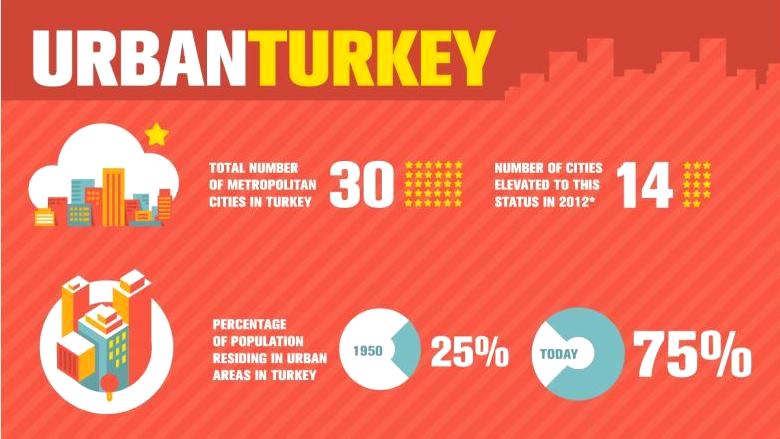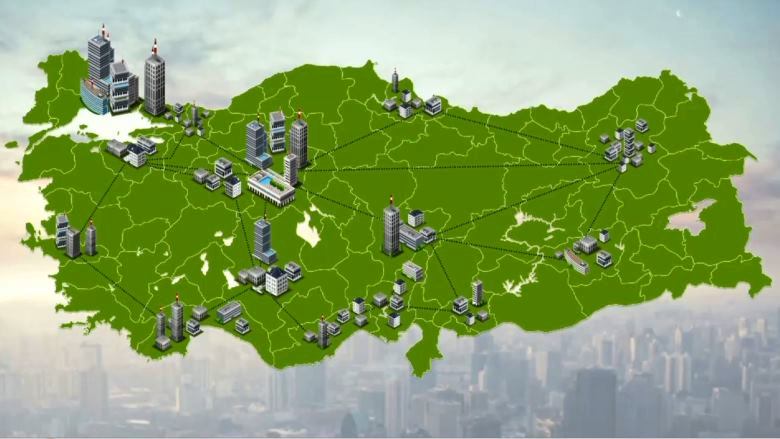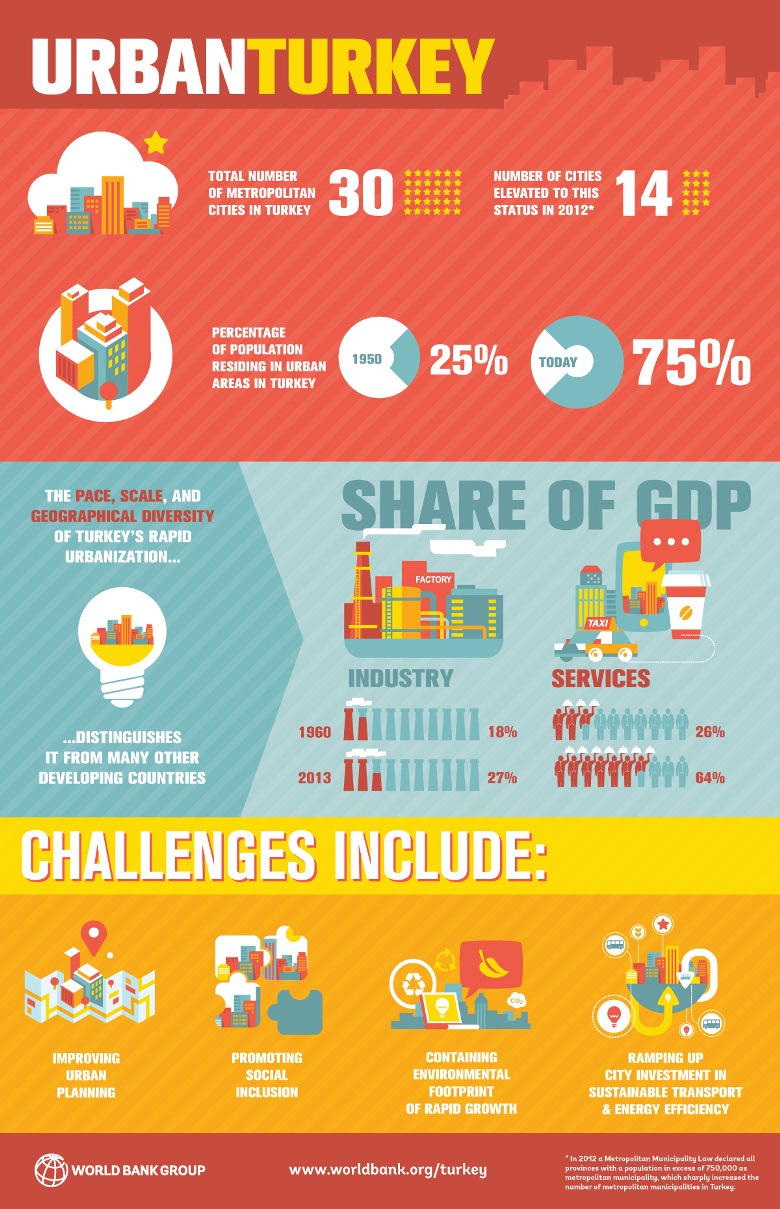These developments make planning, connecting, and financing important policy principles for Turkey’s second-generation urban development agenda. This policy brief frames a second-generation urban development agenda to support Turkey’s transition from upper middle income to high income.
Turkey Urbanization Review: Rise of the Anatolian Tigers highlights salient features of Turkey’s urbanization process with the aim of extracting lessons learned for other developing countries. Adoption of a metropolitan municipality law and regime in the mid-1980s was a prominent feature of Turkey’s emerging system of cities, facilitating the planning and management of cities in line with their economic footprint and across administrative boundaries.
Early investments in connective infrastructure and settlement planning facilitated commercial activity that provided life-blood to even remote areas of the country. Scaled-up housing supply through brokering of the private sector and the granting of amnesties to migrants in informal settlements provided the expanded housing stock and security of tenure for many low income households.
These and other measures contributed to the rise of the Anatolian Tigers – Turkey’s secondary cities that over the past decade have captured a larger share of newly established firms and urban population than the big three – Istanbul, Ankara and Izmir.
The report also outlines a second generation urban agenda that will require strengthened urban spatial planning to avoid costly and inefficient sprawl; greater attention to urban transport planning and investment to ease the transition to public transport, particularly to reduce congestion in fast growing cities; and concerted efforts to promote civic engagement and social cohesion through more active public consultations.


